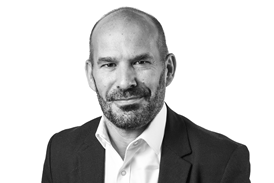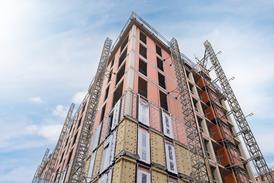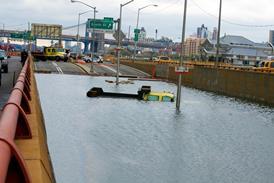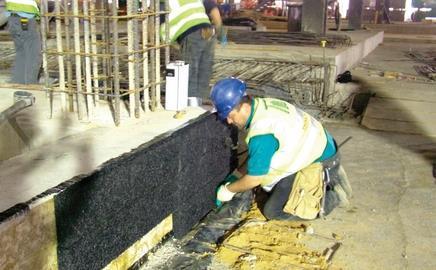CMS Vibration Solutions, part of the £15m-turnover CMS Group, was set up just two years ago and specialises in anti-vibration and structural isolation for all types of developments. With 16 employees across its offices in Warrington and Colchester, the company has been involved in projects ranging from the nanoscience laboratory at Cambridge University to the Young Vic theatre in London.
It specifies, supplies and installs products for the construction and industrial sectors, and manufactures its own range of components. It works mainly with architects, contractors and acoustic consultants.
Paul Lafone, technical director of the firm, talks about his work.
A lot of what we’re involved with is preventing damage to buildings’ structures from vibrations. We’re also involved in preventing airborne and impact noise.
On most projects we talk directly to architects or acoustic consultants. They have an idea of what they want and we come up with a range of solutions, depending on cost, and let them choose.
We then do the detail design, through to the installation.
At the moment, we are seeing big demand from shopping centres, where we are involved in isolating unwanted noise transmissions between cinema complexes, bowling alleys and the adjoining shops.
We’ve just completed one of our more unusual projects – a bespoke floating floor isolation system for University College London to stop exercise activity in the free weights area of its third floor gym causing excessive noise in the Bloomsbury theatre below. Weights hitting the floor were causing structure-borne low frequency noises which caused noticeable disruption.
Our solution combined several different products. A layer of isolation pads at 600mm centres and fixed-in fibre glass matting was laid onto the concrete floor. This was then covered, alternately, with three layers of plywood and two layers of plasterboard, to a total thickness of 75mm. A layer of our own Kushin Pad was laid on top. This is a twin-layer combination made from polyurethane-bound rubber granulated material, which helps absorb the impact of the free weights, and a hard surface for walking on.
We then made up a 1.25m x 1.25m section that was tested in situ. When the acousticians were satisfied with the drop in decibels, we went ahead. Originally the client was going to cover the entire gym floor but the cost led it being restricted just to the area where the free weights were used.
The installation was straightforward but the project was made overly complicated because it was a retrofit in a space with awkward access. We often retrofit, which we find is a lot more complicated than a new build. We find we are the first thing needed and the last thing thought of.
My advice would be to think about vibrations and sound at the start of the project. It becomes more difficult and expensive to come up with a solution later.
The world according to … Paul Lafone
My dream specification is …
One that has already been designed and specified by the acoustician or architect and all we have to do is install it.
I swear by …
Regupol RAV. It’s a damping and isolation system that uses polyurethane bound rubber granules and is made from recycled tires.
What’s past its sell by date …
Anti-vibration systems that use cork-rubber composite materials. These date back between 50 and 60 years. Their performance doesn’t match up to modern alternatives, and because the cork is harvested, it is susceptible to the weather which means the price can fluctuate.
My specification nightmare is…
All projects are different in their own way and most are bespoke and so take a lot of time and thought. What makes it a nightmare is when it is an afterthought and you have to incorporate it into an existing design.
Specifier 25 January 2008
- 1
- 2
- 3
- 4
- 5
 Currently reading
Currently readingCMS Vibration Solutions: Quiet, please
- 6
- 7
- 8
- 9
- 10
- 11
- 12
- 13
- 14
- 15





























No comments yet